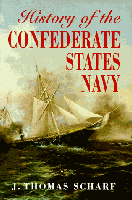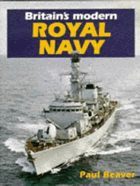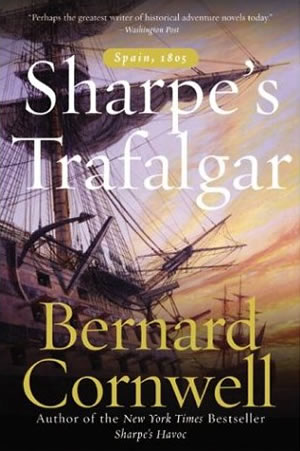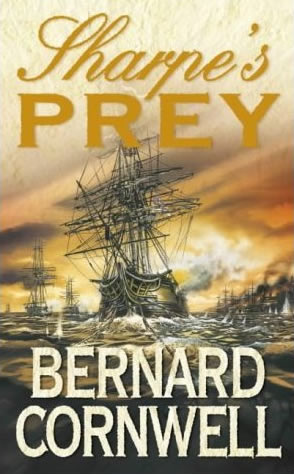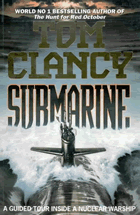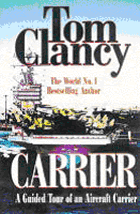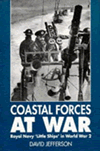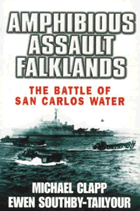Naval Warfare Books
The year is 1805 and Sharpe is stuck in Bombay, waiting passage back to England on the Calliope. He soon discovers that his fellow passengers include the aged patrician Lord William Hale and his "breathtakingly, achingly, untouchably beautiful" young wife, Lady Grace. The scene is set for a romantic but eventful passage, which becomes even more entangled as the Calliope is surprised by the rogue French warship the Revenant. The ensuing maritime adventures sail Sharpe right into one of the most momentous naval battles of all time, off Cape Trafalgar, on the 21st of October 1805, as the massed fleets of Spain and France face the might of Admiral Horatio Nelson's English navy. Order Bernard Cornwell's Sharpe's Trafalgar from amazon.co.uk |
|
The year is 1807; Lieutenant Richard Sharpe is planning to leave the army. Against his better judgment, he is persuaded to accompany the Hon John Lavisser to Copenhagen in what is essentially an act of political skulduggery: they are to deliver a bribe and (hopefully) avert a war. But with the French ensuring that Europe remains at boiling point, Sharpe finds himself protecting his charge against French agents and struggling to ensure that the Danish battle fleet is not used to replace every French ship destroyed at Trafalgar. Sharpe is a character we know well and like, and his customary characteristics (tenacity, bloody-mindedness) are well to the fore here, but, as always, the other characters are equally strikingly drawn: Lavisser is a splendidly complex figure, as are several of Sharpe's nemeses. But it's that wonderfully adroit orchestration of action and plot that keeps the pulse racing, with the bombardment of Copenhagen and the massive bloodshed resulting in a truly impressive set piece: |
|
|
|
In "The Hunt for Red October", Tom Clancy displayed his knowledge of military technology. Now he turns his attention to a subject that has inspired much of his work, the submarine. Drawing on recent research, he examines its history and evolution from the earliest days, through World War II and the development of nuclear powered and nuclear-armed vessels, up to recent technological breakthroughs, and considers its role in the modern world. He explains in detail the particular problems involved in underwater warfare - in navigation, communication, weaponry and noise suppression - and reveals the special skills and qualities of the new breed of men who spend their working lives under the sea. |
| Tom Clancy is your guide on a tour of the US Navy's crown jewel. Floating cities manned by thousands, aircraft carriers are the lynchpin of any military strategy, because of the air superiority they enable. | |
This title recalls the background to the conflict between Britain and Argentina over the Falkland Islands and examines the role of news management. In addition, it assesses different perceptions of the affair and reviews developments since 1982. |
|
This is the story of the fast patrol boats that kept Britain's coastal waters free of enemy craft during World War II. The motor gun boats and motor torpedo boats were to the Royal Navy what spitfires and hurricanes were to the RAF. Training, life ashore and conditions at sea are described, and the book details the development of motor gun boats and high-speed motor launches. It describes the layout, armament, crew and role of these "little ships" and covers events such as Dunkirk, Dieppe, D-Day landings and the daring raid on St Nazaire. |
|
| The book details the trip south, during the South Atlantic campaign of the Falklands War. A sound command structure was imposed upon a wide range of ships and men and San Carlos Water was chosen for the assault on the islands and subsequent inshore operations. Contained are firsthand accounts of the air-sea battles and landings that wrested the islands back the Argentine force. | |
| This is a reappraisal of the ill-fated raid named Operation Jubilee, focusing on such aspects as naval and air operations in the Channel, signals, radar intelligence, agents and deception. It draws from official archives, both German and Allied. From these voluminous but fragmented records, many of which have been destroyed, classified or lost, the book aims to thread the evidence together. Despite its failures, Operation Jubilee succeeded in surprising the enemy in its timing and location, and contributed to the planning of Operation Overlord in 1944. |

